The United Kingdom is one of the best travel destinations in Europe. I was born and raised there, so I’m biased! Still, there aren’t many other places that boast such an array of storied attractions.
Whether you visit England, Scotland, Wales, or Northern Ireland, you’re never far from ancient monuments, outstanding natural beauty, and age-old towns and cities full of iconic architecture. Ultimately, this small island country is a joy to explore.
Want to see its best bits? Here are 25 particularly famous UK landmarks everyone should aim to visit at least once.
1. Big Ben, England
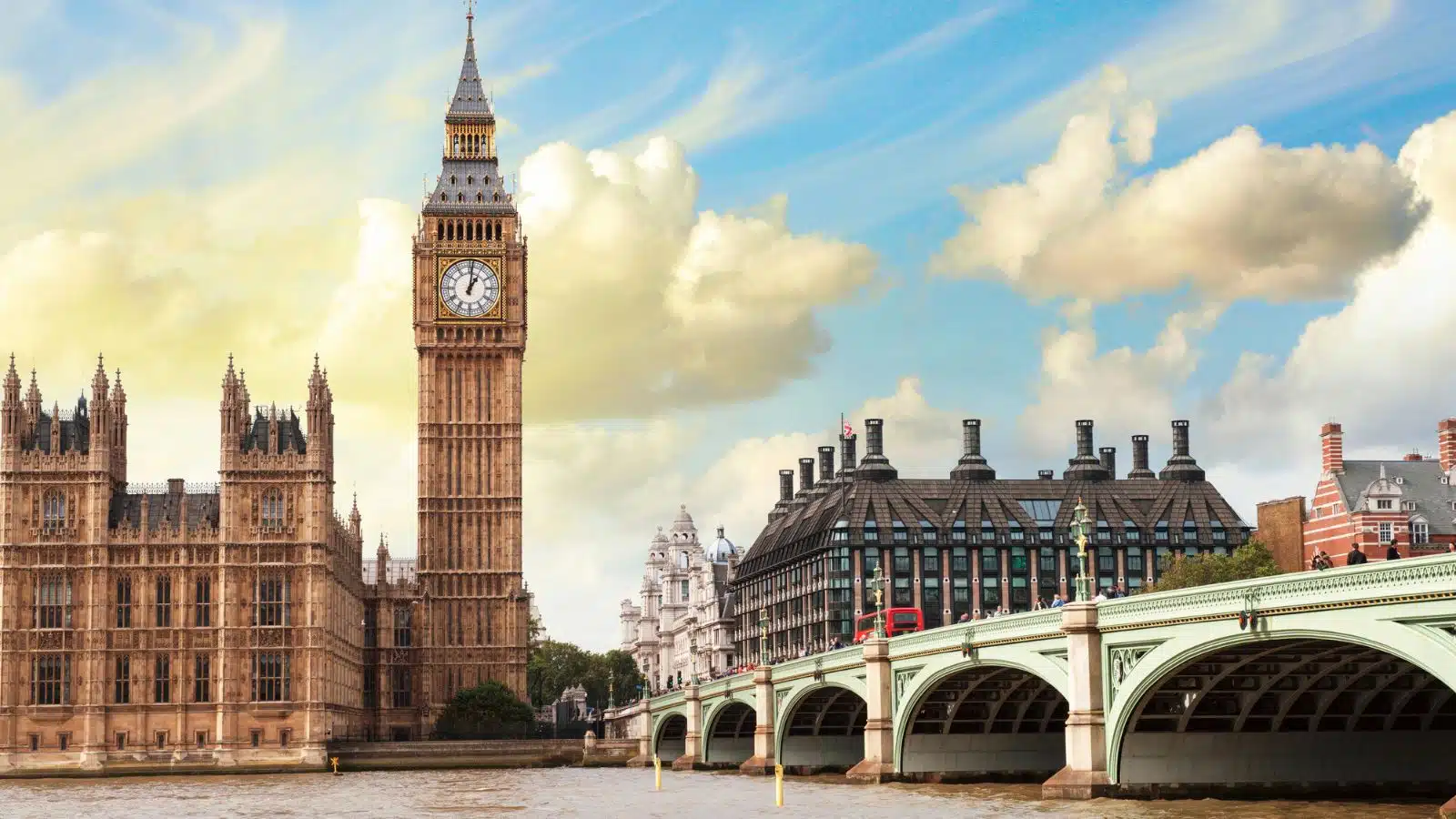
Easily one of the UK’s most recognizable landmarks (if not the world), Big Ben stands at the northern end of the Houses of Parliament in London. The name refers to the 15-ton bell that sits at the top of Elizabeth Tower — a bell that has chimed almost daily since 1924.
2. Westminster Abbey, England

You’ll marvel as you wander this storied and beautiful Gothic church. Westminster Abbey has been the site of every coronation since 1066, as well as 16 royal weddings. Over 3,300 influential people are buried there, including 30 kings and queens and more than 100 famous writers and poets.
3. Tower of London, England

Dating back to William the Conqueror, who ordered the initial construction in 1078, the Tower of London is one of the oldest landmarks in England. During a tour, you can see everything from the palace, prison, and observatory to the royal armory display and Crown Jewels.
4. Tower Bridge, England

One of the most iconic bridges in the world, the combined suspension and bascule bridge crosses high above the Thames River in central London. The twin towers, built in the 19th-century Gothic Revival style, are well worth a tour in conjunction with the nearby Tower of London.
5. Buckingham Palace, England

The official residence of the royal family since 1837, Buckingham Palace is a star attraction in London and among the most famous landmarks in England. During a tour, you can visit some of the palace’s 775 rooms as well as witness the iconic “Changing of the Guards” ceremony.
6. St. Paul’s Cathedral, England

Situated atop the highest point in London, St. Paul’s Cathedral has been built, destroyed, and rebuilt many times since 604 CE. The current version is a stunning blend of Gothic, Baroque, and Neoclassical architecture, while its massive dome is second in size only to St. Peter’s Basilica in Rome.
7. Stonehenge, England

Stonehenge is one of the most famous UK landmarks and a globally renowned prehistoric monument. To this day, no one knows exactly how the giant megaliths were transported here or what the original site was used for. According to Britannica, a druid temple, burial monument, meeting place, or astronomical computer are a few of the theories.
8. The Roman Baths (Bath), England

The appropriately named city of Bath dates back more than 2,000 years to the time of the Roman occupation. The ruins of the famous Roman baths are remarkably well-preserved, and the town itself is home to 500 additional buildings of historical importance. As a result, the entire city is a rare double-nominated World Heritage site. It’s also a fantastic day trip from London.
9. Lake District National Park, England
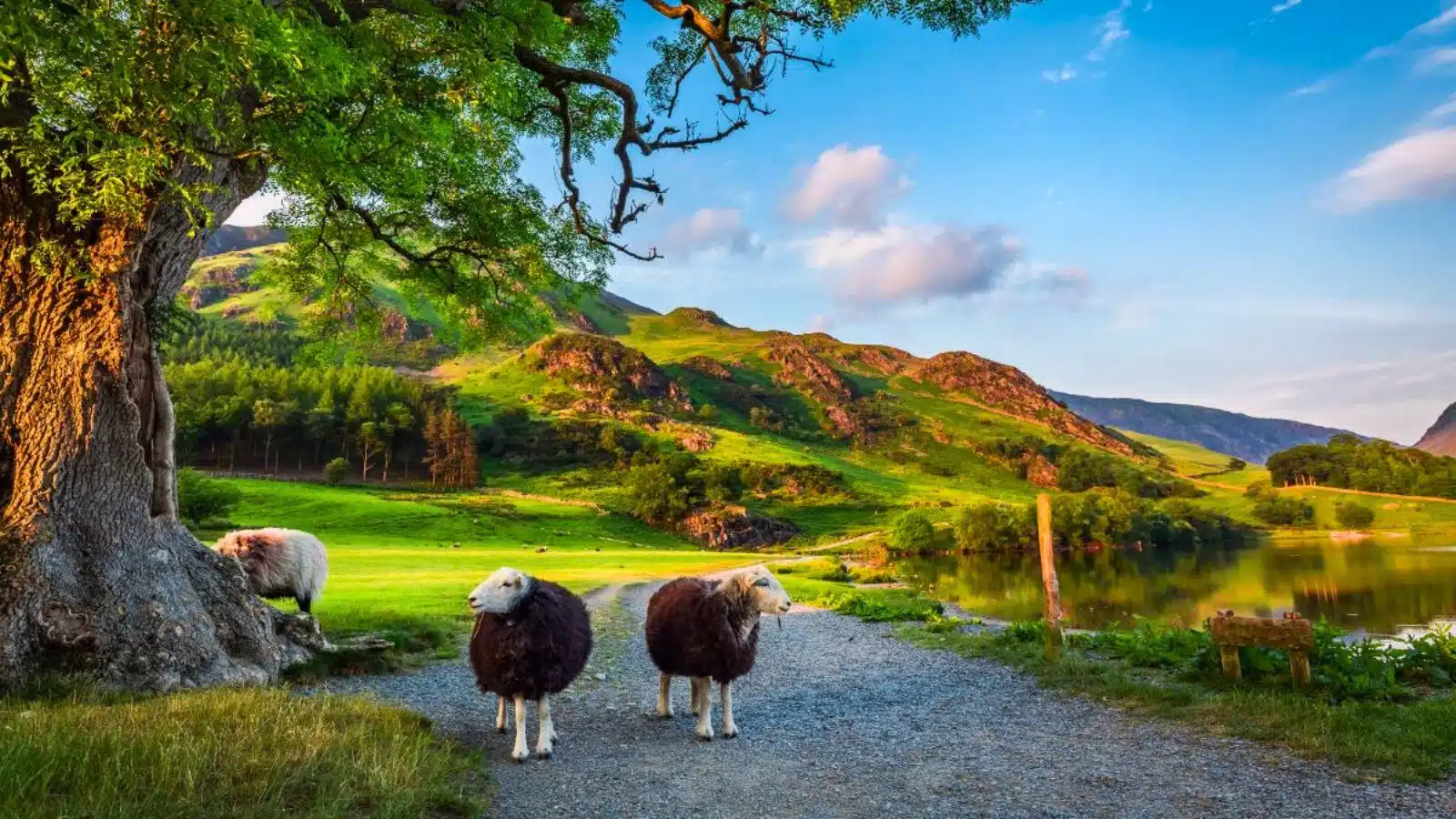
A haven for writers, poets, artists, and nature lovers, the Lake District is undoubtedly one of the most beautiful landmarks of the UK. It’s home to 900 square miles of rolling hills, dozens of natural lakes, and over 2,000 miles of hiking and biking trails.
10. Windsor Castle, England

Just 40 minutes from downtown London, Windsor Castle is another famous royal residence. It’s been an important historical site since William the Conqueror erected a fortress there in the 11th century. Today, it’s home to state rooms, galleries, a chapel, and six square miles of idyllic grounds.
11. Hadrian’s Wall, England

This 73-mile stretch of wall, barracks, and forts was erected 1,900 years ago to guard what was then the northern border of the Roman Empire. Built over six years by order of Emperor Hadrian, the wall stretched from coast to coast to keep our enemy invaders from the north.
12. The Eden Project, England

Can you imagine a tropical oasis in the middle of the UK? That’s what you’ll find at the aptly named Eden Project, a series of enormous greenhouses that house plants from all over the world. The site is also home to adventure activities like ice skating and zip lining, as well as concerts and other events throughout the year.
13. White Cliffs of Dover, England
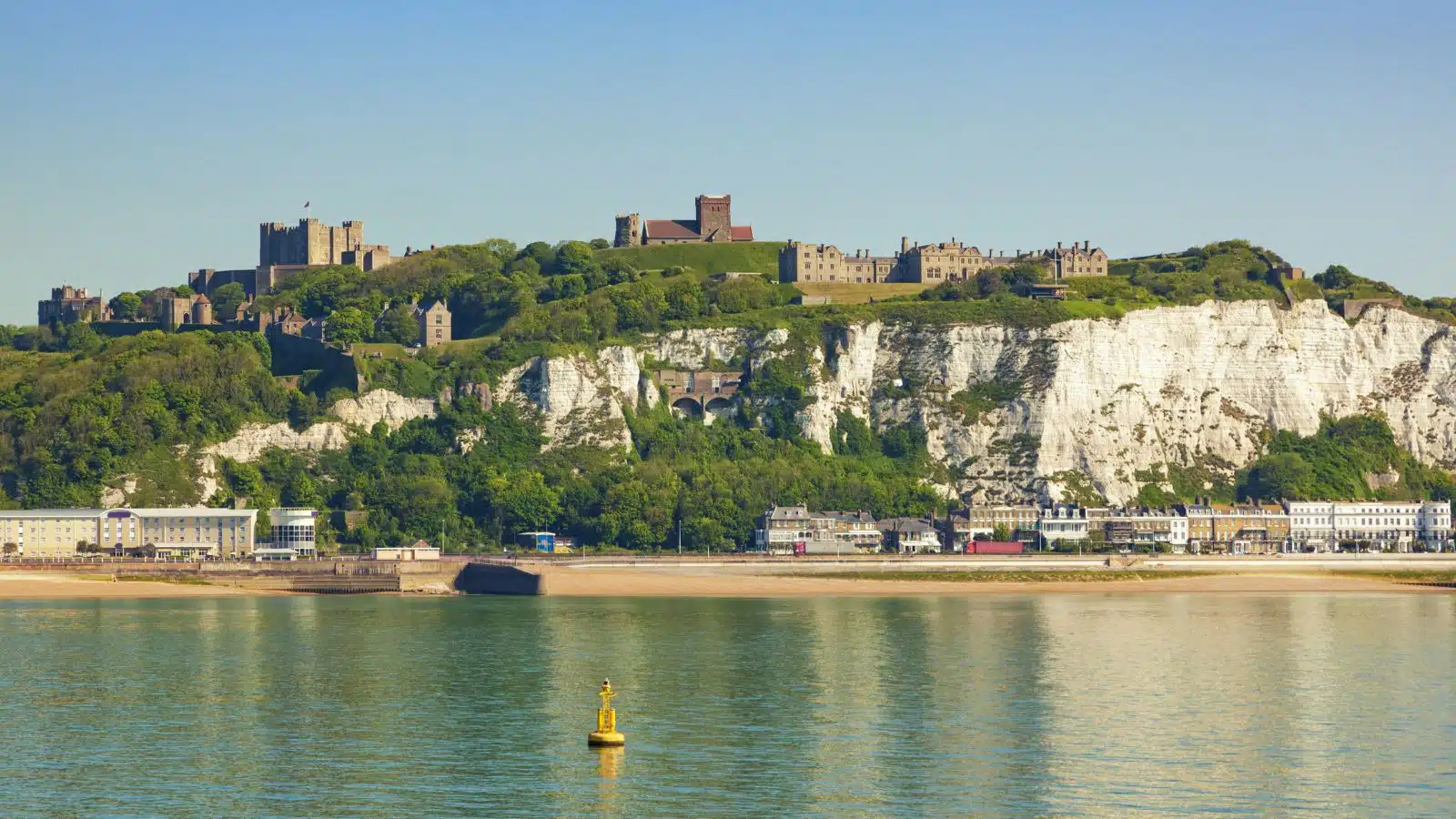
One of England’s most iconic landmarks, Dover’s chalky white cliffs were nicknamed “The Gateway to Britain” by troops returning home from the World Wars. Today this natural area is protected by the National Trust, along with its trails, lighthouses, and other historical sites.
14. Lands End, England

Marking the westernmost point in England, Land’s End in Cornwall is home to an iconic signpost (photo op!), as well as the First and Last House and First and Last Inn. The coastal scenery is among the best in the UK, with majestic green cliffs that tower high above the crashing waves.
15. Loch Ness, Scotland
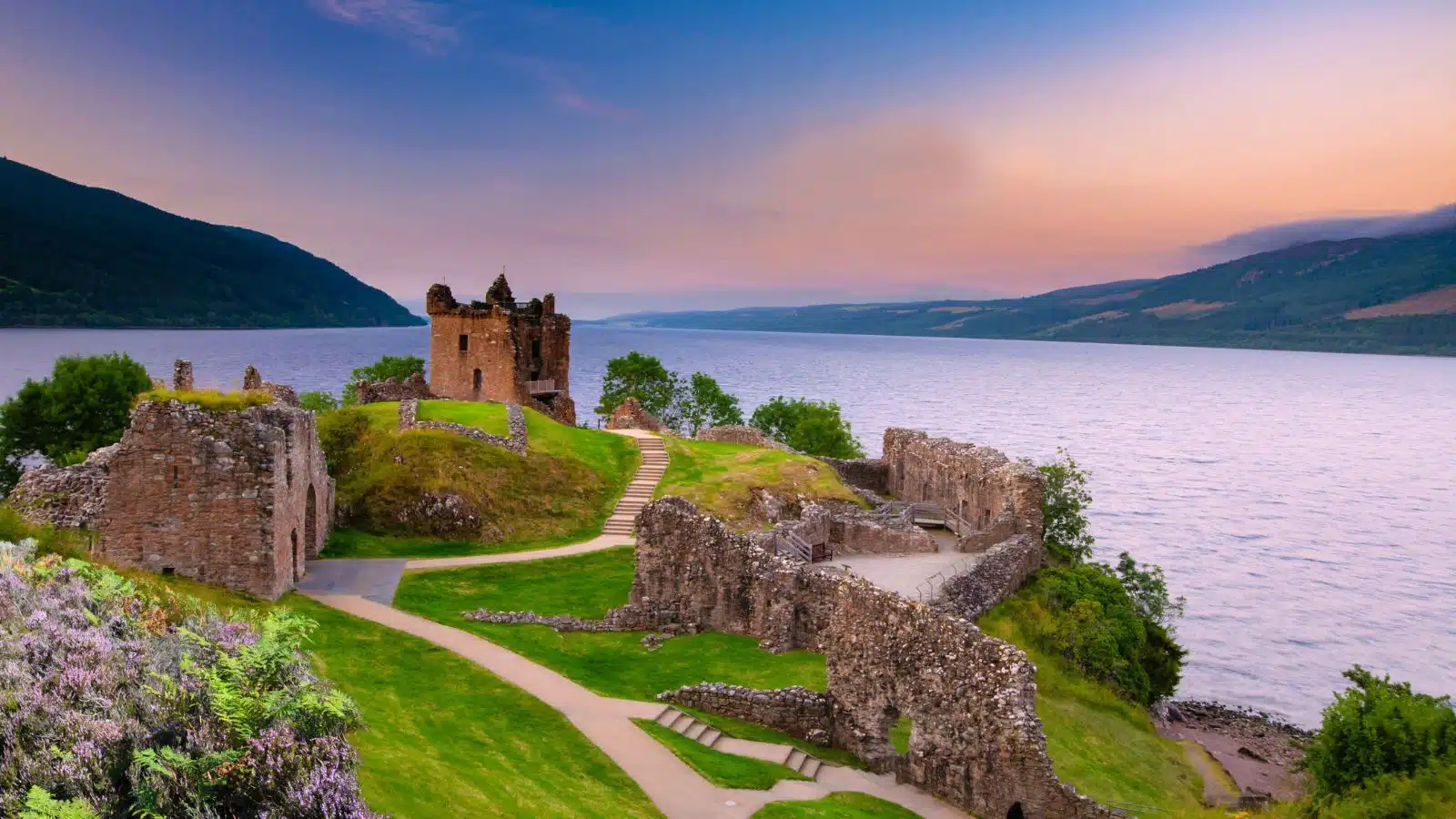
This large, deep, freshwater lake nestled in the beautiful Scottish Highlands is famous for more than just its natural beauty. Since ancient times, residents and visitors alike have reported sightings of a mysterious Loch Ness monster swimming in the lake, which many affectionately refer to as “Nessie.”
16. Edinburgh Castle, Scotland

Built atop Castle Rock (a site that’s been used for at least 3,000 years), the oldest portions of Edinburgh Castle date back to 1130 CE. Over the centuries, it’s been a royal residence, a fortress, and a prison, and today it remains one of the UK’s most famous landmarks. It’s a highlight of one of the best cities in the country.
17. Glenfinnan Viaduct, Scotland

Harry Potter fans will instantly recognize Glenfinnan Viaduct as the site of the “Hogwarts Express.” Whether you’re a fan of the movies or not, it’s easy to be impressed by the 1,000-foot-long Victorian-era viaduct, which happens to be the longest concrete railway bridge in Scotland.
18. John O’Groats, Scotland
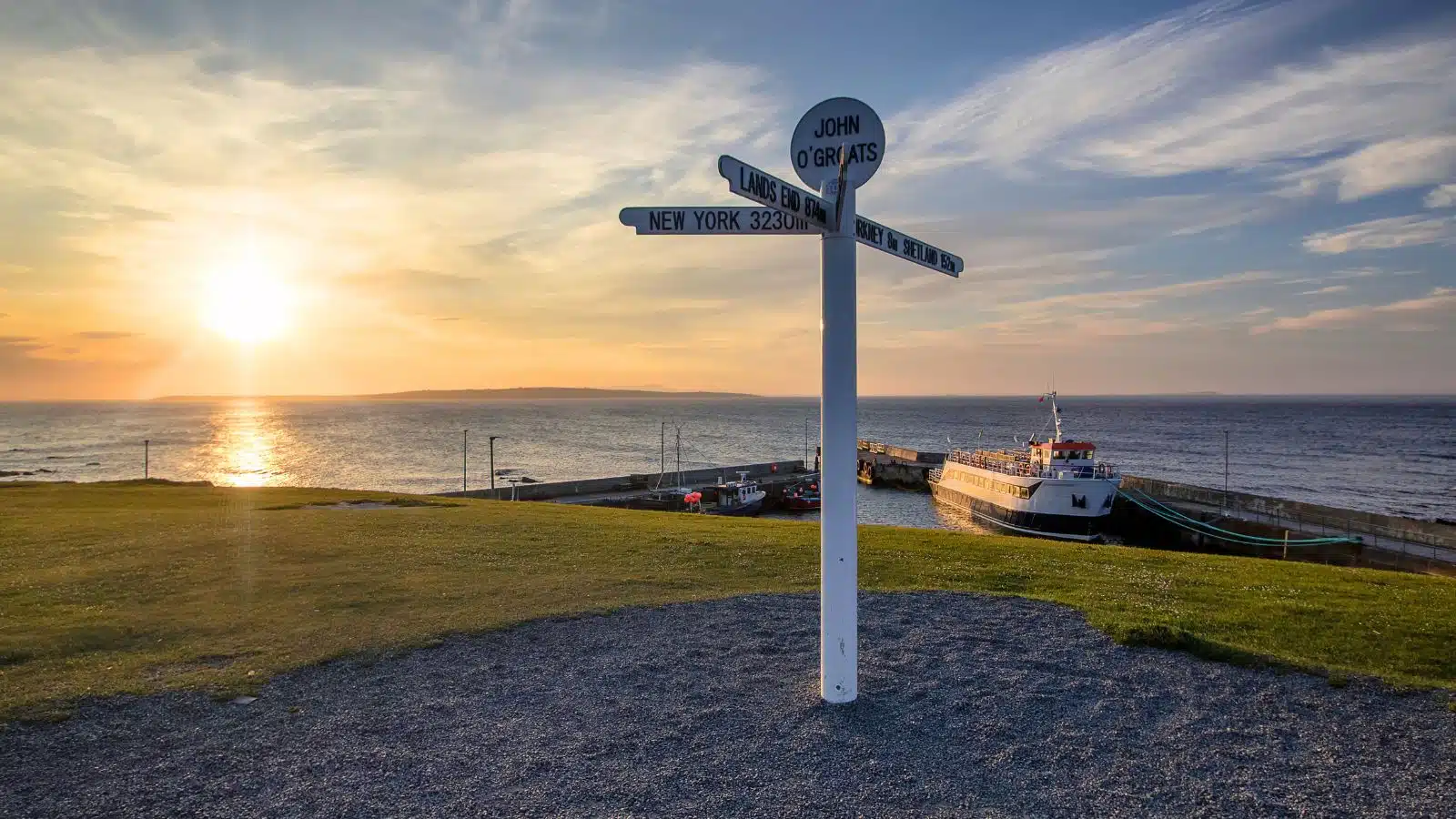
This tiny village on the northern coast of Scotland is the furthest British destination from Land’s End in Cornwall (837 miles). Aside from an obligatory photo in front of the “Journey’s End” signpost, it’s also worth exploring the area for its beautiful coastal scenery and abundant wildlife.
19. Ben Nevis, Scotland

A once-powerful volcano that exploded and then collapsed in on itself, Ben Nevis remains the highest peak in the British Isles. Towering 4,411 feet (1,345m) above the Scottish Highlands, don’t miss the chance to trek up one of the most impressive and famous landmarks in the United Kingdom, regardless of when you visit Scotland.
20. Rhossili Bay, Wales
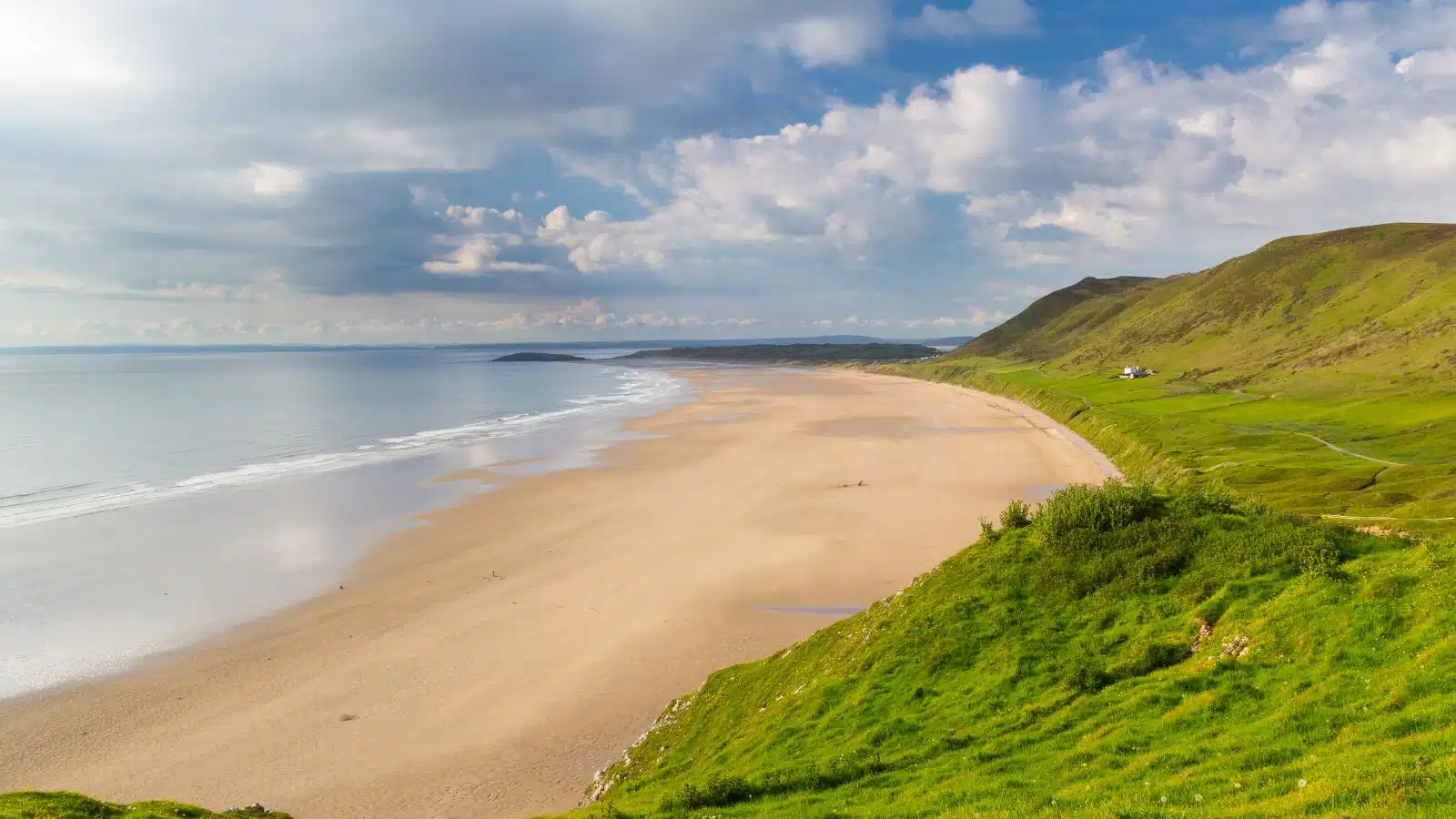
One of the most famous natural landmarks in the UK, Wales’ Rhossili Bay rests at the westernmost edge of the Gower Peninsula. Its 5-kilometre (3-mile) stretch of golden sand was designated the UK’s first Area of Outstanding Natural Beauty.
21. St. David’s Cathedral, Wales

Erected in the 12th century in honor of St David (the patron saint of Wales), the remote St David’s Cathedral is the most impressive church in Wales. Interestingly, it lies at the bottom of a valley, which historians believe was to avoid detection by enemy invaders.
22. Conwy Castle, Wales
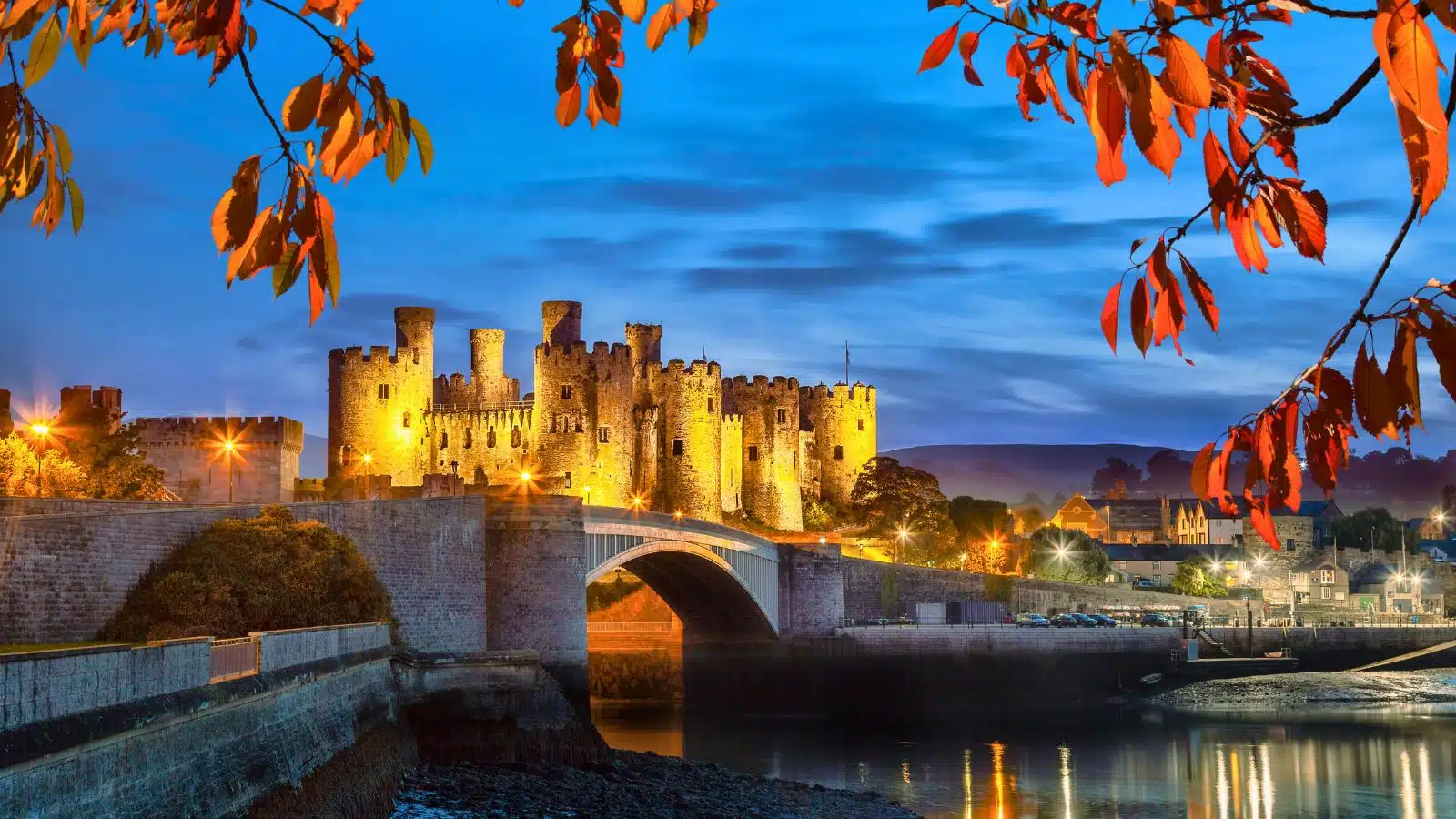
One of the four Castles of Gwynedd (and arguably the most impressive), this 13th-century fortress has been a World Heritage site since 1984.
The castle’s eight stone towers stand high above the mouth of the Conwy River, which made it one of the country’s most strategic defensive sites for centuries.
23. Snowdon (Yr Wyddfa), Wales
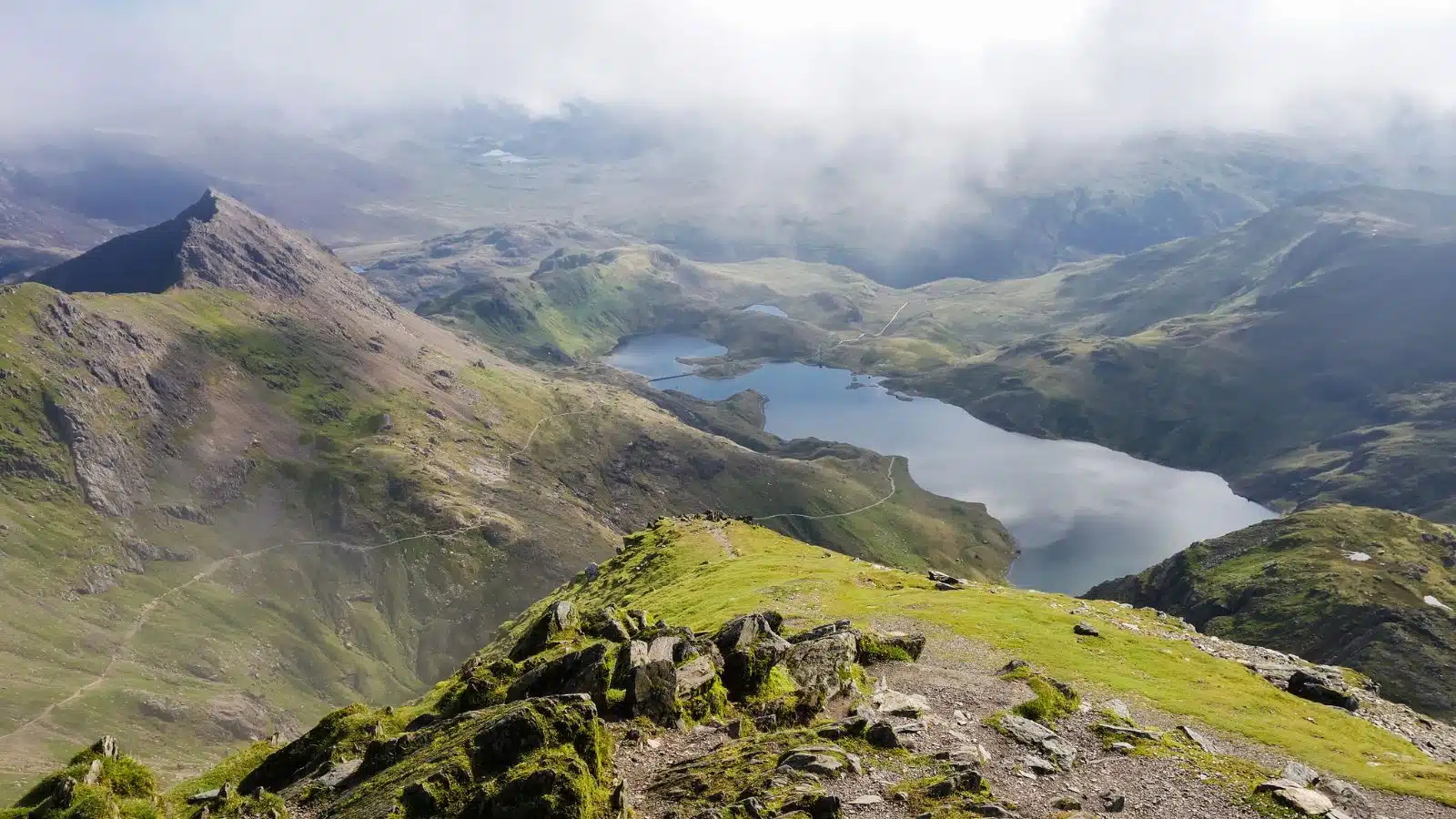
Known in Welsh as “Yr Wyddfa,” it’s easier to say the English name of the tallest peak in Wales and England — Snowdon. The highlight of a visit to Snowdonia National Park, this beautiful mountain reaches 1,085m (3,560 feet) above sea level. Fun fact: Snowdon was an important training ground for Sir Edmund Hillary and his team that became the first to reach the summit of Everest in 1953.
24. Giant’s Causeway, Northern Ireland
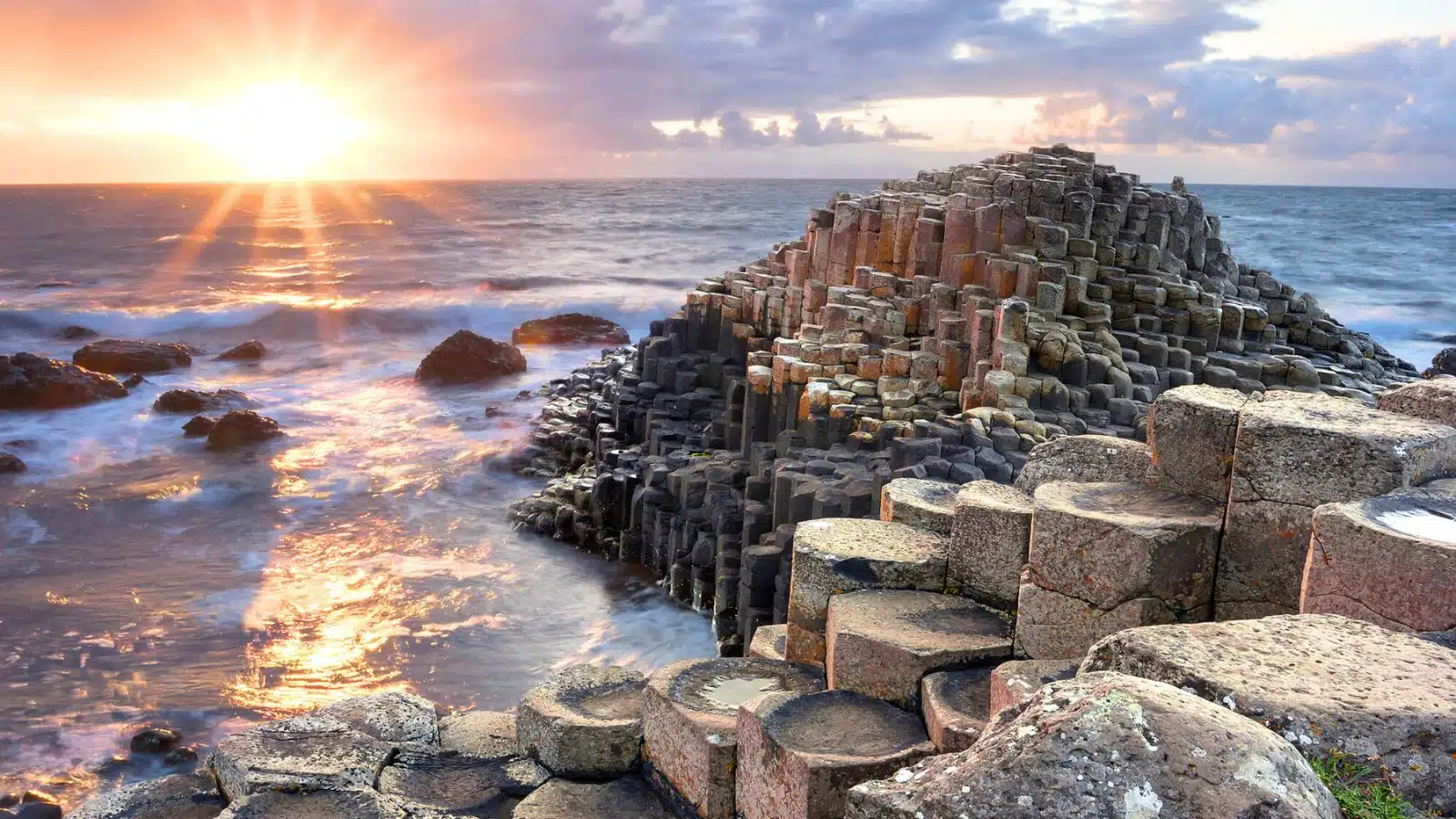
A natural phenomenon you have to see to believe, Giant’s Causeway is a spectacular coastal anomaly made up of 40,000 interlocking basalt columns. Legends abound about how and why it formed, but scientists’ best guess is it’s the result of an ancient volcanic fissure. Whatever its origin, visiting Giant’s Causeway is one of the best things to do in Ireland.
25. Dunluce Castle, Northern Ireland
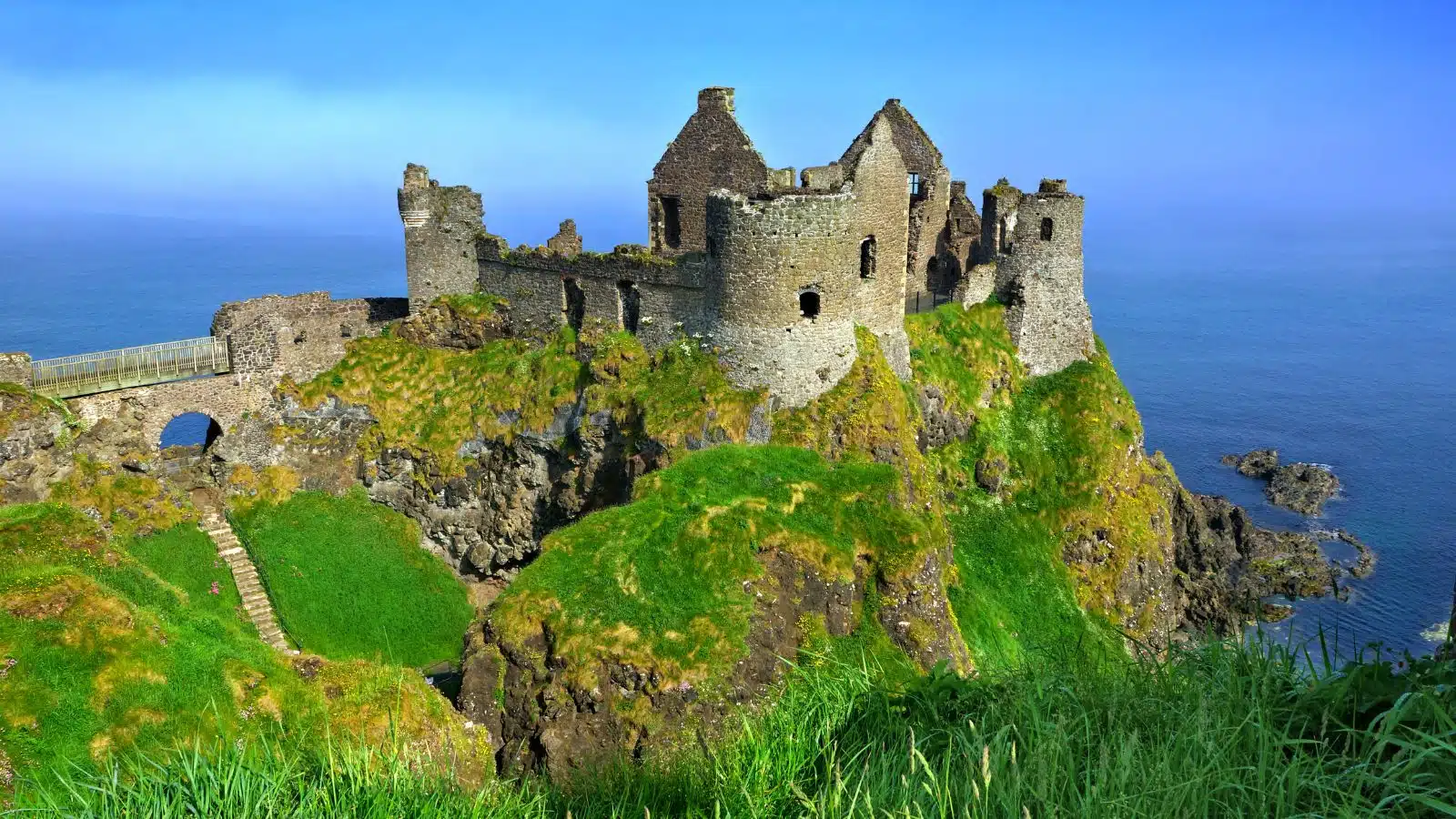
Dating to at least the 1600s, the seaside ruins of Dunluce Castle resemble something from a medieval fairy tale. It’s perched precariously on a cliff that falls dramatically into the sea, making this the perfect spot for those Instagram-worthy photos.
Visit These Famous UK Landmarks

How many of these famous UK landmarks have you already seen? How many remain on your UK bucket list? Honestly, this list hardly scratches the surface of things to do here. Nevertheless, whether you visit England, Scotland, Wales, or Northern Ireland, each landmark discussed above is likely to be a highlight of your trip.
MORE ARTICLES LIKE THIS COMING UP:
[ie-slider id=’1′]